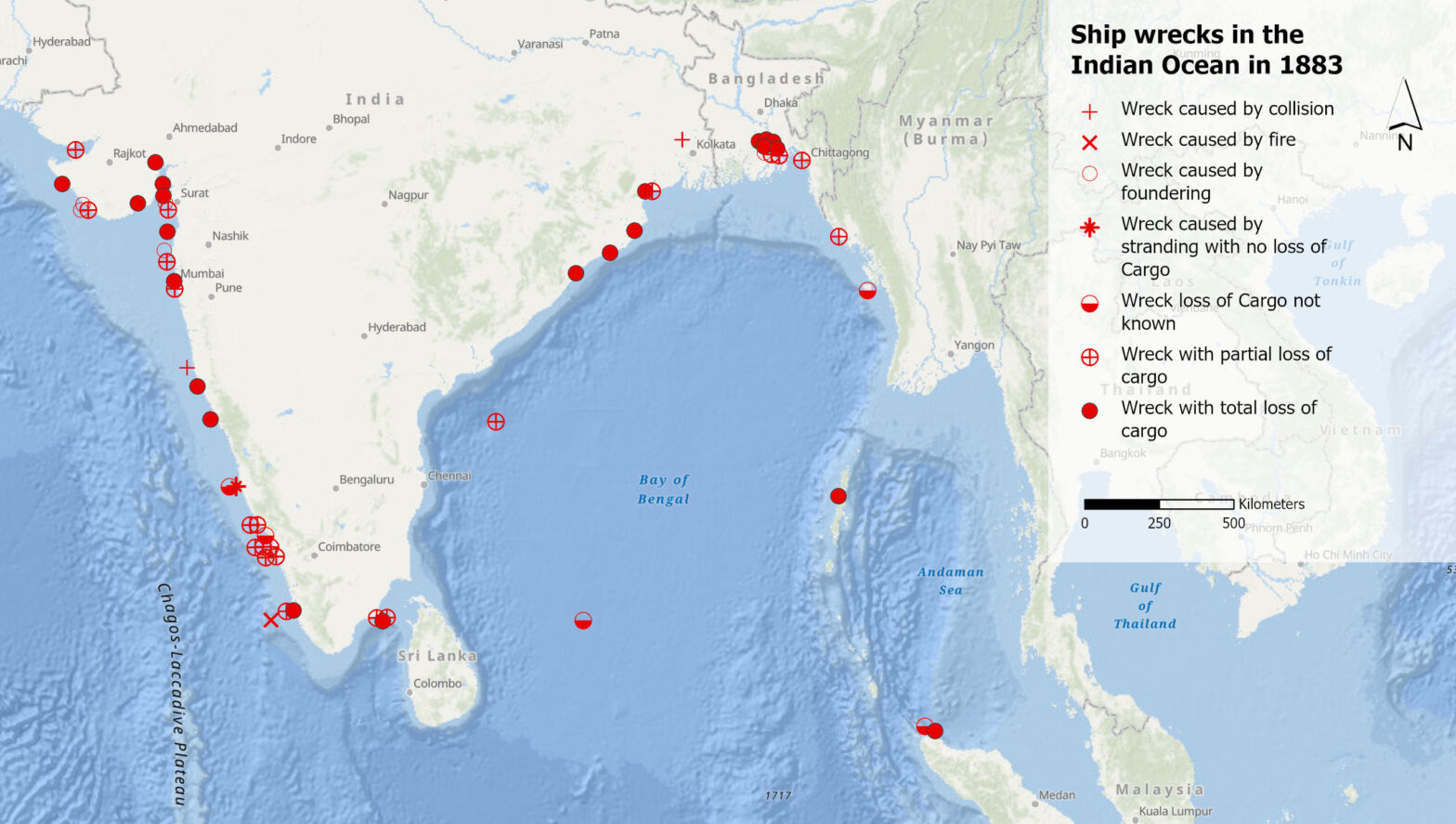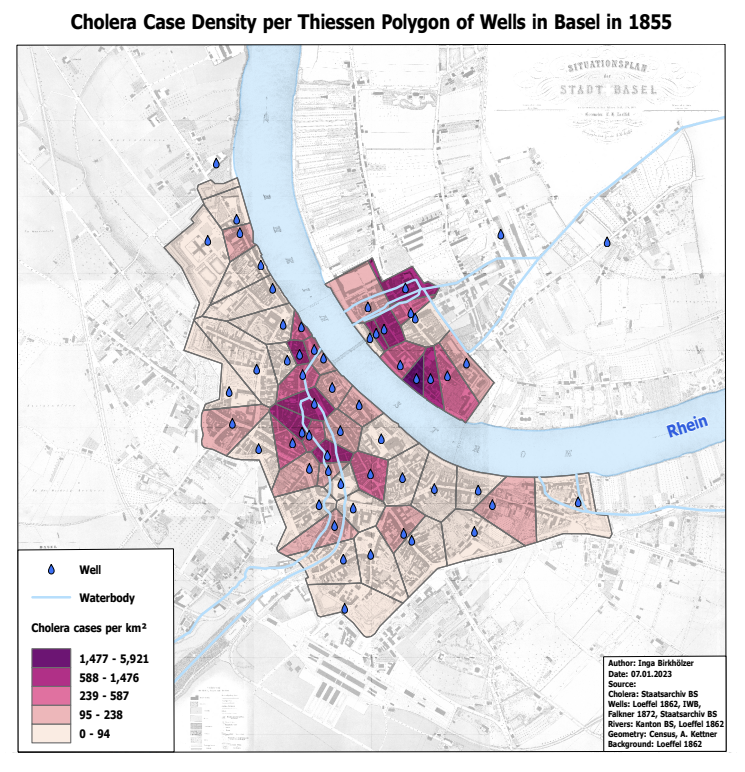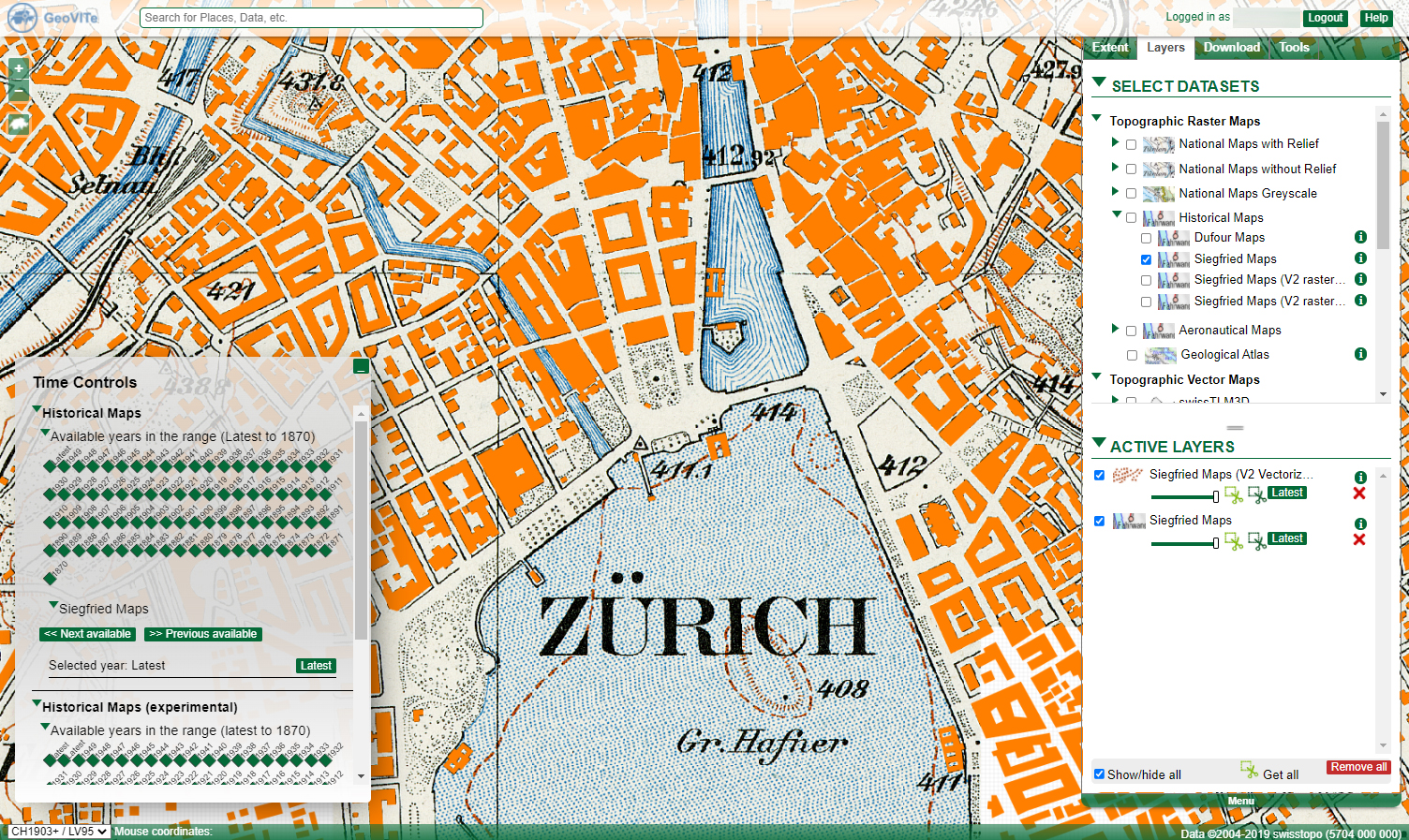What can shipwrecks of the 19th century in the Indian Ocean tell us about the climate of the past? And what can the records of these wrecks tell us about climate knowledge production? Debjani Bhattacharyya, Professor for the History of the Anthropocene at UZH, explores these questions.
Category Archives: Geodata
Was sagen Volksmusik-Sendungen über uns aus?
Volksmusik-Sendungen sind mehr als nur Unterhaltung. Was sie über die Gesellschaft, Kultur und Heimat aussagen, dem geht ein SNF-Forschungsprojekt nach. Wir vom GIS Hub durften fürs Projekt eine Karte der Sendeorte erstellen.
Comparing two sets of point data (III)
When we count points of two data sets per cell, we can compare their densities. Generating Chi expectation surfaces allows us to compare actual with expected densities. To come back to our geographical names with “wald” in Switzerland, we could compare if these names are over- or underrepresented compared to all the geographical names.
Working with point data (II)
This is part II of the point data tutorial for QGIS. It teaches you how to create a grid to calculate a density surface, that is to count the points per grid cell.
Selecting point data in QGIS (I)
Let’s assume: You have imported point data into QGIS and want to analyse it further. This short tutorial shows you step by step how you can filter your dataset based on an attribute or on the spatial location.
How to start a new project in QGIS?
You have spatial data and know what you want to analyse, but how do you start? This short tutorial gets you started and guides you step by step through a project setup.
Using GIS to tackle the SDGs
How do companies, NGOs and public institutions monitor their progress towards the sustainable development goals (SDGs), and how can GIS software contribute? Five speakers provided answers from different perspectives at the event “Using GIS to tackle the SDGs”, organized by the GIS Hub and ESRI Switzerland.
A new generation of desktop GIS for the Swiss Parks
This summer, the Competence Centre for Geoinformation (CCG) of the Swiss Parks Network, in collaboration with the Department of Geography of the University of Zurich (GIUZ), organised an introductory training course on ArcGIS Pro for employees of the Swiss parks.
Cholera 1855 in Basel: Between History, Epidemiology and Geographic Visualisation
In 1854, Dr. John Snow creates a map of cholera cases in London’s Soho district. He can thus show that the disease is transmitted through contaminated water. In her Master’s thesis, Inga Birkhölzer investigated what can be extracted today from the cholera figures of 1855 in Basel using geographical visualisation.
From background maps and time series to toilet tiles in the national map look
The GeoVITe platform provides topographic raster and vector maps, digital elevation models and orthophotos for research. Roman Walt, who supports and advises the users of the platform, explains in an interview how the data from GeoVITe can be used, what the added value is compared to the data from Swisstopo – and he reveals the funniest request.









